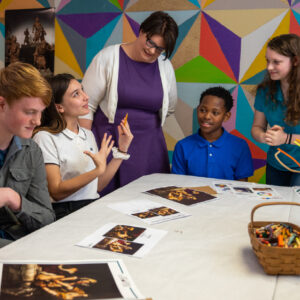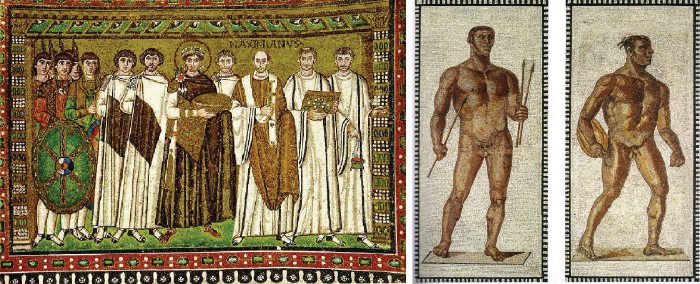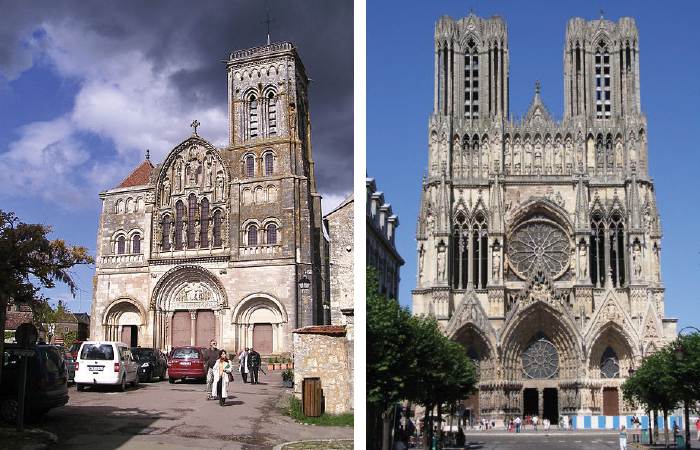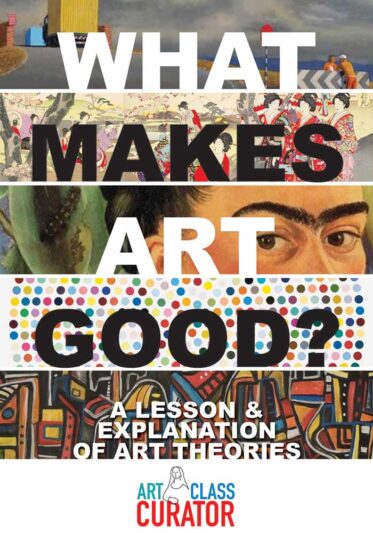Inside: Use these techniques artwork examples to compare and contrast art in your classroom. Art comparison help students see the art in a new way and make the conventions of an art movement more clear and understandable.
If I had to pick my favorite teaching method for art history, it probably would be compare and contrast art. When you place two artworks next to each other, new ways of understanding the art can open up!
There are multiple ways to compare and contrast art:
- comparing works of art from the same art movement or period to look for commonalities and shared themes,
- comparing two depictions of the same subject,
- comparing works of art from one period with works from the period that came before,
- and probably many more!
Using Compare and Contrast to Teach Art History
In this post, I focus on comparing works from one period with art from the period that comes before. I love this method because, in addition to reviewing prior knowledge, you teach students to discover the conventions of the art movement or period on their own.
It’s easy to tell students that the conventions of Baroque art are contrasted between light and dark, intimate compositions, use of contemporary everyday models, foreshortening, etc, but they won’t remember it unless they find those things for themselves. When you put a Baroque artwork next to a Renaissance artwork, those conventions become immediately clear.
Use the following artwork pairs to have students better understand and connect with the conventions and themes of the art periods.

Get the Full Lesson!
This Lesson is in The Curated Connections Library!
Find the full lesson from this post along with hundreds of other art teaching resources and trainings in the Curated Connections Library. Click here for more information about how to join or enter your email below for a free SPARKworks lesson from the membership!
Compare and Contrast Art Examples: Renaissance/Baroque
In my Italian Baroque lesson (which you can download as a member of The Curated Connections Library), I have 4 sets of images that I print and have students compare and contrast art in small groups. My favorite set is Leonardo da Vinci’s The Last Supper and Caravaggio’s Supper at Emmaus.
Lead a discussion on these artworks being sure to note the differences in the lighting, the people, the setting/background, the positions of the people, the lines, and the colors.
Compare and Contrast Art Examples: Ancient Rome/Byzantine
After Christianity became the official religion of the Roman Empire, art took a drastic turn from the focus on man to the focus on God. I love to compare this Roman mosaic with the mosaic of Justinian and his attendant.

The differences in subject matter are clear. The Roman artwork glorifies the strength and the body of a man while the Byzantine artwork no longer shows the men with realistic proportions in art. Students will note the differences in body proportions, the use of color and pattern, and the Byzantine complexity vs. the Roman simplicity.
Compare and Contrast Art Examples: Romanesque/Gothic
Romanesque is kind of a weird art period to teach. It is so varied and transitional. Putting a Romanesque building next to a Gothic really trains students to look closely at details and notice the glory and impressive engineering of a Gothic Cathedral!

Check out this past post on teaching Gothic architecture for more information about this side-by-side.
Resource Library Subscribers: Download the Gothic PowerPoint.
Compare and Contrast Art Examples: Neoclassical/Romantic
The honor and stoicism of Neoclassical art is a great contrast to the emotional turmoil of Romanticism. Compare David’s Oath of the Horatii with Delacroix’s Lady Liberty Leading the People.

Patriotism and nationalism are key themes in both of these art movements, but this manifested in their art in incredibly different ways. This art comparison works really well too with a poetry writing exercise. Have students write haikus about the paintings, and then compare the language used in each.
Compare and Contrast Art Examples: Impressionism/Post-Impressionism
I find Post-Impressionism a little harder to teach than other art movements. It’s mainly just a collection of artists in this strange transition period between Impressionism and Modern Art. It’s Impressionism but it’s not. It’s Fauvism but it’s not.

Putting a Van Gogh next to a Monet works as an art comparison because you can really notice the addition of emotion. I describe Post-Impressionism to my students as Impressionism+Emotion+Bolder, Unrealistic Colors.
Classroom Connection

The compare and contrast art activity from the bundle of free art appreciation worksheets is a great way to get students thinking.
What other artworks do you like to compare and contrast with your students? Please share in the comments!







I just wanted to say thank you for this inspirational lesson. I am a coach for Academic Decathlon and I am not an art expert so this was a great way to get the students to look at the different periods in a more engaging way then listening to me lecture. We are currently virtual so I divided the compare/contrasts for different groups to discuss and post their ideas on different google slides then I linked each art period to more background information using The Art Story website so they could expand/confirm what they noticed.
What a great way to use this resource! Thank you for sharing! 🙂
this is really helpful for me thank you
You’re welcome!
your Van Gogh painting has the wrong date. It isn’t 1989. not sure the exact date but I know it wasn’t in after I was born LOL. Otherwise great info thank you
Thank you for bringing this to our awareness! We’ll get the date corrected.